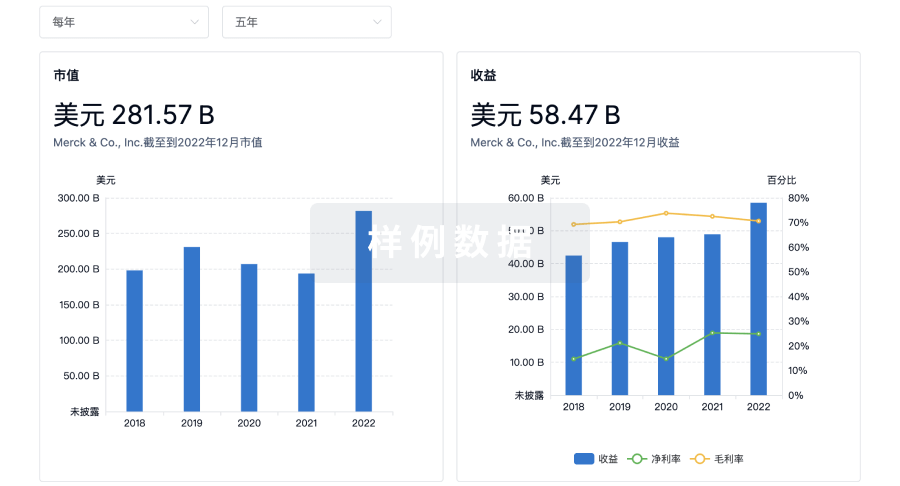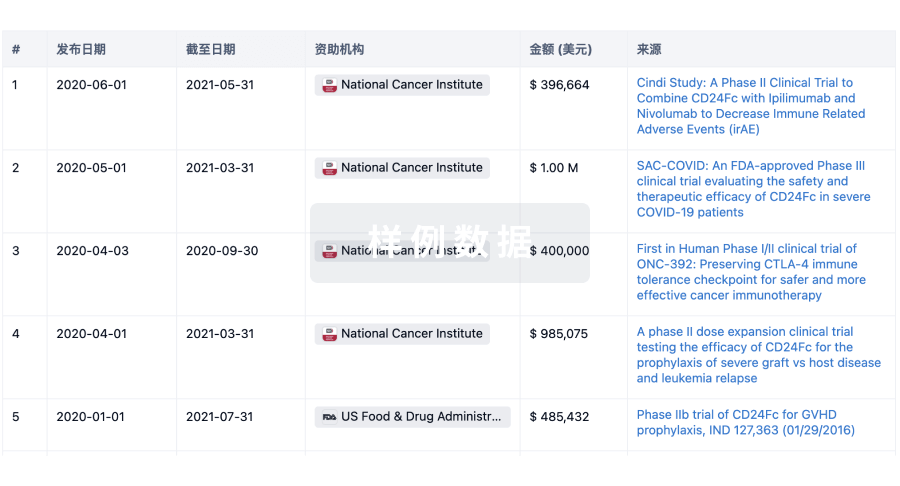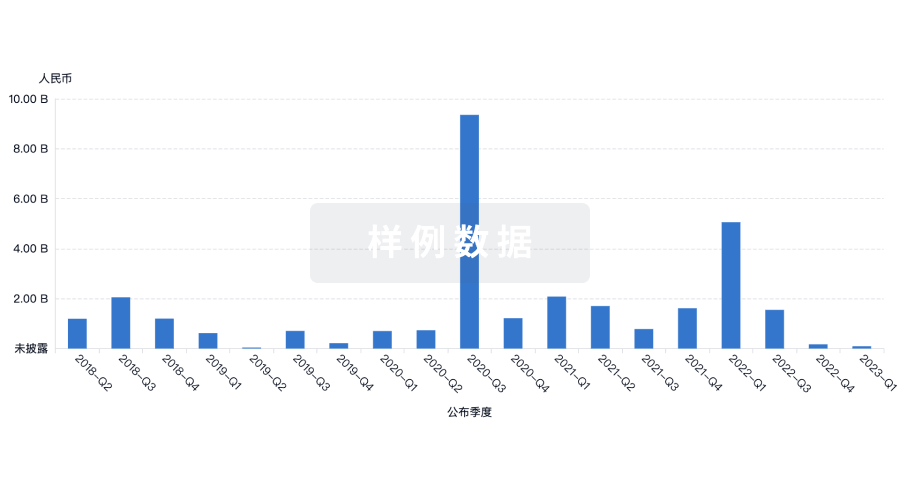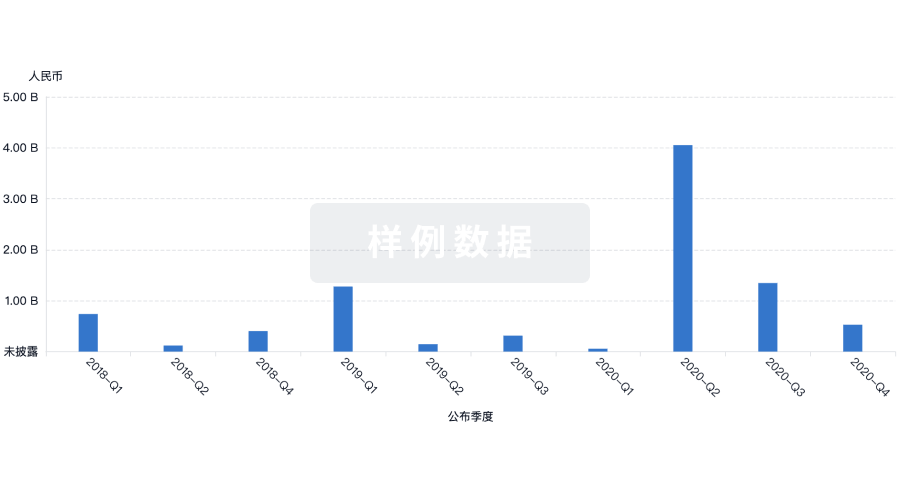预约演示
更新于:2025-08-27

Yunnan University of Chinese Medicine
更新于:2025-08-27
概览
标签
神经系统疾病
心血管疾病
肿瘤
小分子化药
中药
疾病领域得分
一眼洞穿机构专注的疾病领域
暂无数据
技术平台
公司药物应用最多的技术
暂无数据
靶点
公司最常开发的靶点
暂无数据
| 排名前五的药物类型 | 数量 |
|---|---|
| 小分子化药 | 13 |
| 中药 | 1 |
关联
14
项与 云南中医药大学 相关的药物16
项与 云南中医药大学 相关的临床试验ChiCTR2400082479
Clinical Study of Moxibustion Treatment of Renal Bone Disease Based on the Theory of Kidney Governing Bone
开始日期2024-04-01 |
申办/合作机构 |
NCT06552143
An Applied Study on the Use of Stone Needles Therapy to Assist the Rehabilitation of Maternal Diastasis Rectus Abdominis Based on the Theory of Belt Channel
This clinical trial aims to find out whether stone needles therapy can effectively assist in the treatment of maternal diastasis rectus abdominis (DRA) based on the Belt channel theory, it will also validate whether the Ben-Tovim Walker body attitude questionnaire (BAQ) can be used as a tool to measure body image satisfaction in Chinese patients with postpartum DRA. The main questions it aims to answer are: Can stone needles therapy promote the recovery of maternal DRA? Whether the Chinese version of the Body attitude questionnaire (BAQ-C) can be used as a body image satisfaction measurement tool for patients with postpartum DRA. The researchers will add stone needles therapy to neuromuscular electrical stimulation (NMES) and massage therapy to see if stone needles therapy can promote the recovery of postpartum DRA.
开始日期2023-09-01 |
申办/合作机构 |
NCT05789186
Clinical Study of Cang Ai Volatile Oil (CAVO) on Mild to Moderate Depression in Children and Adolescents
A randomized controlled trial was conducted to observe the improvement of mild to moderate depressive symptoms in children and adolescents with the aromatic herbal compound Cang Ai Volatile Oil (CAVO) and to evaluate the effectiveness and safety of the clinical application of CAVO.
开始日期2023-05-01 |
申办/合作机构 |
100 项与 云南中医药大学 相关的临床结果
登录后查看更多信息
0 项与 云南中医药大学 相关的专利(医药)
登录后查看更多信息
445
项与 云南中医药大学 相关的文献(医药)2026-06-01·Medical Gas Research
Gas-induced spinal cord compression: mechanisms, diagnosis, and treatment of intraspinous pneumorrhachis
Article
作者: Zhu, Shubei ; Wang, Shan ; Yang, Yujiao ; Yun, Debo ; Zheng, Xidan ; Zhang, Yan
Gas-induced spinal cord compression, also known as intraspinous pneumorrhachis, is a rare condition in which the presence of gas in the spinal canal generally does not result in any symptoms. However, in certain cases, gas can compress the spinal cord, leading to severe neurological dysfunction. This underscores the importance of early recognition and intervention. Herein, we conduct a comprehensive analysis of the literature on pneumorrhachis by searching databases such as PubMed, ClinicalKey, Web of Science, and CNKI. We discuss the etiology, pathophysiology, clinical manifestations, imaging features, differential diagnosis, treatment strategies, and prognosis of these patients. Our findings indicate that the occurrence of intraspinous pneumorrhachis is associated with various factors, including medical conditions, trauma, and infection. While most cases are limited in extent and resolve spontaneously, a subset of cases may signal a serious underlying condition.
2026-01-01·Neural Regeneration Research
Chitosan alleviates symptoms of Parkinson’s disease by reducing acetate levels, which decreases inflammation and promotes repair of the intestinal barrier and blood–brain barrier
Article
作者: Wang, Yinying ; Yan, Jinyuan ; Yang, Zhongshan ; Shi, Guolin ; Wang, Ruohua ; Zhao, Ninghui ; Huang, Xinwei ; Chen, Rongsha ; Li, Ke ; Cao, Xia
JOURNAL/nrgr/04.03/01300535-202601000-00041/figure1/v/2025-03-30T110608Z/r/image-tiff
Studies have shown that chitosan protects against neurodegenerative diseases. However, the precise mechanism remains poorly understood. In this study, we administered chitosan intragastrically to an MPTP-induced mouse model of Parkinson’s disease and found that it effectively reduced dopamine neuron injury, neurotransmitter dopamine release, and motor symptoms. These neuroprotective effects of chitosan were related to bacterial metabolites, specifically short-chain fatty acids, and chitosan administration altered intestinal microbial diversity and decreased short-chain fatty acid production in the gut. Furthermore, chitosan effectively reduced damage to the intestinal barrier and the blood–brain barrier. Finally, we demonstrated that chitosan improved intestinal barrier function and alleviated inflammation in both the peripheral nervous system and the central nervous system by reducing acetate levels. Based on these findings, we suggest a molecular mechanism by which chitosan decreases inflammation through reducing acetate levels and repairing the intestinal and blood–brain barriers, thereby alleviating symptoms of Parkinson’s disease.
2025-12-31·JOURNAL OF DERMATOLOGICAL TREATMENT
Successful treatment of generalized pustular psoriasis during pregnancy with secukinumab in a patient hypersensitive to spesolimab: a case report
Article
作者: Zhang, Yun ; Peng, Guoyao ; Yu, Tao ; Zhang, Hongwei ; Nie, Xinyi ; Liao, Chengcheng ; Li, Xia ; Xiang, Jie ; Luo, Jiaxin ; Luo, Liping ; Li, You ; Zhang, Shuang
OBJECTIVE:
Generalized pustular psoriasis (GPP) is a rare autoinflammatory skin disease characterized by recurrent, widespread eruption of sterile pustules rich in neutrophils. In addition to skin manifestations, this condition may be accompanied by fever, muscle pain, joint pain, systemic inflammation, or organ failure. GPP during pregnancy poses a serious threat to both mother and fetus, with limited options for medication. This study aimed to evaluate the safety of secukinumab during pregnancy as a treatment option for psoriasis.
MATERIALS AND METHODS:
We report the case of a 35-year-old pregnant woman presenting with extensive, confluent erythematous scaly plaques and numerous pustules, accompanied by fever. Over the past few years, her lesions showed remission following treatment with corticosteroids, traditional Chinese medicine, and secukinumab. However, after a brief remission with spesolimab, the lesions recurred and no significant improvement was obtained with glucocorticoid therapy. Secukinumab treatment was then initiated.
RESULTS:
Secukinumab was administered subcutaneously at a dose of 300 mg at weeks 0, 1, 2, 3, 4, and 8. Following treatment, GPP symptoms were reduced, and fetal development remained normal. A healthy boy was delivered vaginally at term.
CONCLUSION:
Our findings provide evidence that secukinumab is an effective and safe treatment option for GPP during pregnancy.
9
项与 云南中医药大学 相关的新闻(医药)2025-08-20
·云南白药
8月19日,云药科技联盟成立大会在云南白药集团举行。大会以“聚合科技创新·引领产业发展”为主题,旨在深入贯彻落实云南省中药材产业高质量发展联席会议第一次会议精神,突破中药材产业科技力量分散、政产学研连接不紧密、基层推广力量薄弱等关键挑战。政府联合指导单位、院士专家团队、高校科研院所、龙头企业科研机构及基层技术人员300余人齐聚一堂,共启云南中药材产业协同创新与集群发展新起点。
此次大会由云南省农业农村厅、云南省科学技术厅、云南省工业和信息化厅、云南省卫生健康委员会、云南省市场监督管理局、云南省林业和草原局、云南省药品监督管理局、云南省科学技术协会等联合指导,云南白药集团股份有限公司主办、云南白药集团中央研究院承办。
云南省农业农村厅副厅长、云南省中药材产业工作专班组长张杰指出,云药科技联盟通过整合联盟各单位科技人员、技术、项目、资金等资源,聚焦中药材全产业链关键环节的科技攻关及成果转化,构建“政府统筹、专家引领、协同攻关、资源共享”的科技“政产学研用”创新机制,推进科技创新和产业创新深度融合发展,不断提高云药产业科技化、标准化、国际化水平,为云南中药材产业高质量发展提供科技支撑和保障。省科学技术厅副厅长尚朝秋、省林业和草原局副局长段利武表示,将作为联合指导单位负责统筹协调好政策支持与方向引导,协同推进联盟的科研创新与产业实践,形成“政产学研用”深度融合的云药科技研发、推广创新模式,科技赋能云药产业高质量发展。
云南白药集团党委书记、董事长张文学表示,云药科技联盟将通过构建“顶层战略引领—专家技术支撑—基层推广落地—企业市场驱动”的四级联动创新体系,将重点做好整合资源,打破地域与学科壁垒,汇聚全省乃至全国中药材领域的优质科技力量,让分散的创新要素形成合力;聚焦“十大云药+146种云南特产药材(含十大健康资源)”重点品种,在种质资源库建设、良种育繁、种植提升、产地加工、标准健全、品质检测、基础研究、产品研发八大任务上精准发力,让科技成果真正转化为新质生产力;快速构建产业标准体系,以打造世界一流产业为目标,构建中药材发展的标准体系,以标准提升“云药”产业核心竞争力,以标准推动“云药”产业健康发展,以标准促进“云药”品牌体系打造。
联盟将以院士团队领航科技前沿,以专家团队突破技术壁垒,以基层推广体系把脉田间地头,以龙头企业打通产业链条,共建平台、共创标准、共享信息、共享技术,携手共进,同心同向,不断提高云药产业科技化、标准化、国际化水平,为云药高质量发展提供强大的科技支撑。
会上,“云药科技联盟”正式揭幕成立。将以“十大云药+146种云南特产药材(含十大健康资源)”为重点品种,围绕产业发展核心关键技术和市场需求,重点推进八大任务,全面提升云药产业核心竞争力。云南白药集团中央研究院、云南省科学技术院、中国科学院昆明植物研究所、云南中医药大学、云南省食品药品监督检验研究院、中国科学院昆明动物研究所、云南省农业科学院、云南农业大学、云南省中药产业协会、昆明医科大学、云南大学、昆明理工大学、云南民族大学、西南林业大学、云南省中医医院、云南省中医中药研究院、云南省林业和草原科学院、云南省林业调查规划院、云南省农业技术推广总站、云南省林业和草原技术推广总站、云南省农业工程研究设计院、昆药集团股份有限公司、云南植物药业有限公司、云南省绿色食品发展中心等24家发起单位完成签约,同步向36名任职人员颁发聘书。云南白药集团中央研究院担任首届联盟理事长单位,云南省科学技术院、中国科学院昆明植物研究所、云南中医药大学担任常务副理事长单位,秘书处设在云南白药集团中央研究院。
云南白药集团中央研究院暨云药科技联盟秘书处同步发布倡议书,呼吁全国中药材科技创新单位、专家团队及相关企业加入联盟,携手共建协同创新平台、共创标准、共享信息和技术,深化产学研融合创新,共同打造“云药”科技创新新高地。
中国工程院院士、云南白药集团中药战略科学家朱兆云围绕云南中药材产业科技创新作《科技创新筑牢云药产业根基》专题报告。围绕充分利用生态条件,发展天然药物,促进云药科技创新与产业创新深度融合等作了全面深刻的交流分享,并对云药科技创新七大重点任务进行阐述,包括开展云南道地药材品质现状研究、进一步制订药材产地加工规范、制定云南道地药材规格等级标准等,以科技创新赋能云药产业,推动将“云药航母”驶向创新高地。
云药科技联盟理事长单位代表、常务副理事长,云南白药集团中央研究院党委书记、副院长王京昆表示,联盟秘书处将全力保障好联盟的健康运行,为云药科技工作创建良好科研生态。联盟一定牢记省委省政府的嘱托,以此次会议为起点,以实干求实效,携手把云药科技联盟建设成为云南省中药材产业发展的重要引擎,助力云药产业高质量发展。
会后,联盟秘书处组织召开了云药科技联盟理事会第一次会议。未来,联盟将持续推进云南中药材产业创新驱动发展新阶段的质能升级,不断提高云药产业科技化、标准化、国际化水平,为云南中药材产业高质量发展提供科技支撑和保障,共创云药产业的创新篇章。
供稿:组织/宣传部 中央研究院
往期阅读推荐
·云南白药闪耀博鳌西普会:生态共建启新程,七大亮点绘就大健康新版图
· 云南白药:生态协同,以数智化转型引领健康新时代
· 云南白药召开生态合作伙伴计划暨新品发布会
· 重磅官宣|周深正式成为云南白药品牌音乐代言人
·从大省到强省:云南如何迈过“价值断裂带”
·云南白药集团与九州通医药集团深化战略合作共谋医药健康产业新篇章
引进/卖出
2025-07-10
·米内网
精彩内容近日,CDE官网显示,方盛制药/云南中医药大学申报的中药1.1类新药香芩解热颗粒获得临床试验默示许可,用于治疗成人流行性感冒湿热郁表证。米内网数据显示,近年来中国三大终端六大市场(统计范围详见本文末)呼吸系统中成药销售额均超过800亿元。香芩解热颗粒是由方盛制药与云南中医药大学共同开发的一款中药1.1类创新药,具有解表透热、利咽消肿的功效。其临床申请于今年4月获得CDE承办受理,并于近日顺利获批临床,适应症为成人流行性感冒湿热郁表证。中成药在呼吸系统疾病中应用广泛。米内网数据显示,近年来中国三大终端六大市场呼吸系统中成药销售额均超过800亿元。从细分终端销售看,零售药店终端(城市实体药店+网上药店)为主渠道,近年来占比均超过45%;其次是公立医院终端(城市公立医院+县级公立医院),近年来占比均超过33%。近年来中国三大终端六大市场呼吸系统中成药销售情况(单位:万元)来源:米内网格局数据库在呼吸系统领域,今年以来,国内有2款中药新药获批上市,分别为新疆银朵兰药业的1.1类新药复方比那甫西颗粒(热性感冒)、华润三九的3.1类新药益气清肺颗粒(疫病后短期症状);1款中药1.1类新药提交NDA,为浙江宝仁堂药业的三贝苎鼾胶囊(阻塞性睡眠呼吸暂停低通气综合征);4款中药新药获批临床,包括方盛制药的香芩解热颗粒、新奇康药业的散热止咳颗粒2款1.1类新药,以及亚宝药业的ZY-A001、葫芦娃药业的肺热咳喘颗粒2款2类新药。自上市以来,方盛制药一直以“创新中药研发”为核心竞争力,致力于打造成为一家以创新中药为核心的健康产业集团。目前方盛制药主要药品有依折麦布片、藤黄健骨片、强力枇杷膏(蜜炼)、玄七健骨片、小儿荆杏止咳颗粒等。近年来,随着方盛制药不断加大研发投入与力度,其创新管线逐步迎来收获期。米内网数据显示,自2019年以来,方盛制药已有3款中药创新药获批上市,分别为小儿荆杏止咳颗粒、玄七健骨片、养血祛风止痛颗粒。其中,小儿荆杏止咳颗粒、玄七健骨片均已纳入国家医保乙类目录。据不完统计,目前方盛制药还有6款中药创新药在国内处于申请临床及以上阶段,聚焦心脑血管科、妇科、儿科、消化科、呼吸科等领域,其中健胃祛痛微丸处于III期临床,用于慢性非萎缩性胃炎脾胃气虚兼湿热瘀滞所致胃脘疼痛、神疲倦怠、口苦口干、纳差、胃脘胀满等;蛭龙通络片、益气消瘤颗粒均处于II期临床,分别用于脑梗死(中风中经络-恢复期气虚血瘀证)、子宫肌瘤。方盛制药国内在研的部分中药新药来源:米内网综合数据库注:米内网《中国三大终端六大市场药品竞争格局》,统计范围是:城市公立医院和县级公立医院、城市社区中心和乡镇卫生院、城市实体药店和网上药店,不含民营医院、私人诊所、村卫生室,不含县乡村药店;上述销售额以产品在终端的平均零售价计算。数据统计截至7月10日,如有疏漏,欢迎指正!免责声明:本文仅作医药信息传播分享,并不构成投资或决策建议。本文为原创稿件,转载文章或引用数据请注明来源和作者,否则将追究侵权责任。投稿及报料请发邮件到872470254@qq.com稿件要求详询米内微信首页菜单栏商务及内容合作可联系QQ:412539092【分享、点赞、在看】点一点不失联哦
上市批准申请上市临床2期
2025-06-07
·云南白药
近日,云南白药集团中央研究院第十五期“焕章论坛”学术交流活动在白药空间格物会议室成功举办。本期论坛以“青蒿素类药物研发前沿与药食同源产业化发展”为主题,特邀云南省专家人才产业服务团专家、云南特色植物提取实验室特色植物筛选平台首席科学家、云岭产业技术领军人才、高级工程师杨兆祥,云南省专家人才产业服务团专家、云南中医药大学教授、云岭产业技术领军人才赵毅教授作专题报告。杨兆祥以青蒿素类产品研发、产业化和国际化为题,系统介绍了团队在青蒿素制备工艺优化、国际质量标准提升及青蒿素衍生物开发中的突破性成果,展现了青蒿素在治疗肿瘤、自身免疫性疾病、消化系统疾病等新领域的多样化应用。他指出青蒿素的研发历程为中医药现代化发展和解决全球健康问题提供了典范,未来应持续推动多学科交叉创新,完善全产业链标准体系,提升我国天然药物国际话语权。赵毅教授以云南特色药食同源饮品研究与开发为题,阐释了药食同源在疾病预防、治疗、康复等方面丰富的中医理论基础和临床经验。药食同源物质作为中华民族传统健康智慧的结晶,兼具疾病预防与养生功能,产业潜力巨大。云南省在发展药食同源饮品产业方面,特色资源优势突出,团队正重点开发滇橄榄、火麻仁、薏苡仁等特色饮品,挖掘其药效价值与市场潜力。赵教授强调,需通过建立标准体系、突破关键技术、深化产学研合作推动产业升级,以打造具有国际竞争力的健康饮品品牌,助力健康中国战略与区域经济发展。“焕章论坛”作为云南白药集团深化产学研融合的重要平台,一直致力于搭建学术前沿与产业实践之间的桥梁。本次论坛聚焦青蒿素类药物的研发前沿以及药食同源的产业化发展,旨在助力生物医药产业高质量发展。未来,云南白药将携手各界同仁,充分发挥云南生物多样性资源和区位优势,加强产学研合作与多学科交叉融合,推动中医药从“传统经验”向“科学范式”跃迁,从“中国瑰宝”走向“世界共享”。论坛由云南白药集团中央研究院党委书记、副院长,药品事业群首席医学官王京昆主持。集团领导、中央研究院、药品事业群、中药资源事业群、滋补美肤事业部等相关部门人员参会。主讲嘉宾介绍杨兆祥杨兆祥,云南省专家人才产业服务团专家,云南特色植物提取实验室特色植物筛选平台首席科学家,云岭产业技术领军人才,云南省创新团队带头人,云南省中医药产业发展研究院学术委员会委员,中国(云南)自由贸易试验区顾问委员会委员,第一、二届香港中药创新研发中心科学顾问委员会委员。荣获“云岭优秀员工”暨“云南省五一劳动奖章“,中国药学会优秀药师等称号。4次荣获省部级科技进步1等奖,3次荣获国家知识产权优秀成果奖。赵 毅云南省专家人才产业服务团专家,云南中医药大学教授,云岭产业技术领军人才,云南省技术创新人才,云南省政府特殊津贴专家,“创业云南”创业指导专家,云南省药食同源饮品工程研究中心、云南省高校芳香中药研究重点实验室、云南中医药特色健康产品研发协同创新中心负责人,主编《芳香中药学》(国内首部)等著作。供稿:中央研究院往期阅读推荐·云南白药集团协办昆明市安全生产月活动启动仪式 代表企事业发出倡议·云南白药集团数智科技有限公司到云天化信息科技公司调研 共话数字化转型与科技赋能新篇章·喜报!云南省医药有限公司上榜“2024年度中国药品流通行业批发企业主营业务收入二十强”名单·万品一键查 健康送到家 | 云找药&泰邦亮相国际医疗器械博览会·云南白药大药房助力“2025年世界无烟日翠湖健康跑”
100 项与 云南中医药大学 相关的药物交易
登录后查看更多信息
100 项与 云南中医药大学 相关的转化医学
登录后查看更多信息
组织架构
使用我们的机构树数据加速您的研究。
登录
或

管线布局
2025年08月28日管线快照
管线布局中药物为当前组织机构及其子机构作为药物机构进行统计,早期临床1期并入临床1期,临床1/2期并入临床2期,临床2/3期并入临床3期
药物发现
8
6
临床前
临床申请批准
1
登录后查看更多信息
当前项目
| 药物(靶点) | 适应症 | 全球最高研发状态 |
|---|---|---|
香芩解热颗粒 | 流感病毒感染 更多 | 临床申请批准 |
4,4′-Methylenediphenol | 阿尔茨海默症 更多 | 临床前 |
Tumulosic acid ( PRKN ) | 血脂障碍 更多 | 临床前 |
4-hydroxybenzaldehyde (Yunnan University of Chinese Medicine) | 缺血性脑损伤 更多 | 临床前 |
Polyporenic acid C ( PRKN ) | 血脂障碍 更多 | 临床前 |
登录后查看更多信息
药物交易
使用我们的药物交易数据加速您的研究。
登录
或

转化医学
使用我们的转化医学数据加速您的研究。
登录
或

营收
使用 Synapse 探索超过 36 万个组织的财务状况。
登录
或

科研基金(NIH)
访问超过 200 万项资助和基金信息,以提升您的研究之旅。
登录
或

投资
深入了解从初创企业到成熟企业的最新公司投资动态。
登录
或

融资
发掘融资趋势以验证和推进您的投资机会。
登录
或

Eureka LS:
全新生物医药AI Agent 覆盖科研全链路,让突破性发现快人一步
立即开始免费试用!
智慧芽新药情报库是智慧芽专为生命科学人士构建的基于AI的创新药情报平台,助您全方位提升您的研发与决策效率。
立即开始数据试用!
智慧芽新药库数据也通过智慧芽数据服务平台,以API或者数据包形式对外开放,助您更加充分利用智慧芽新药情报信息。
生物序列数据库
生物药研发创新
免费使用
化学结构数据库
小分子化药研发创新
免费使用
